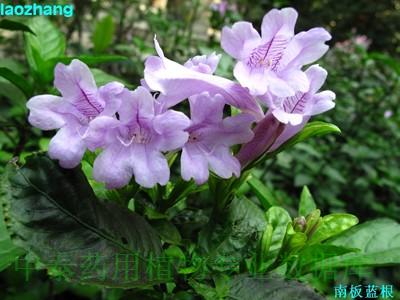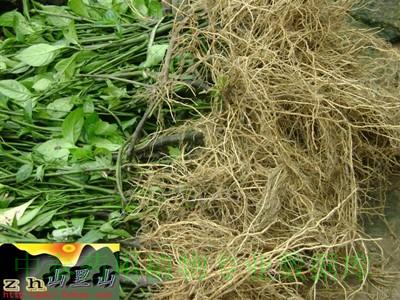| [English Name] | Common Baphicacanthus Rhizome and Root | |
| [Chinese Name] | 南板蓝根 | |
| [Pinying Name] | Nanbanlangen | |
| [Latin Name] | Baphicacanthis Cusiae Rhizoma et Radix | |
| [Genera] | Acanthaceae | |
| [Efficacy] | Antipyretic drug | |
| [Pictures] | Plant picture | Drug picture |

|

|
|
| [Alias] | ||
| [Source] | ||
| [Plant morphology] | ||
| [Distribution] | ||
| [Gathering and processing] | ||
| [Characteristics] | ||
| [Ecology] | ||
| [Chemical composition] | ||
| [Pharmacological activities] |
1.Anticancer: Indirubin show a good curative effect on chronic myelogenous leukemia like Busulphan. But it has no bone marrow depression[1,2]. 2. Antibacterial and Antiviral: Tryptanthrin contains in baphicacanthus root(BR) show a strong antibacterial action[3]. BR injecta show antiviral action on influenza, human cytomegalic inclusion disease and coxsackie virus[4-6]. 3.Other Effects:BR injecta still had anti-inflammatory, immunologic enhancement and protecting liver and lowering transaminase action[7]. |
|
| [Clinical trial] | 1. Acute pharyngitis: 146 cases with acute pharyngitis were divided into 3 groups randomly: 48 cases treated with composite Banlangen; 46 cases treated by Cefalexin 375mg three times daily; 52 cases treated by both composite Banlanen and Cefelaxin 375mg three times daily. All the patients used Caoshanhun lozenge as well. Results: two groups that treated with Banlangen had better effects than the Cefelaxin group(P<0.05) with early effective action and keep the symptoms stable quickly[1]. 2. Subclinicl condyloma acuminatum: 60 cases of patients in treatment group were treated with Banlangen polysaccharide cream, another 60 cases in control group were treated with polysaccharide cream without Banlangen, 2~3 times a day, three months continually. Results: in the treatment group, 48 cases were cured, 12 cases were relapsed; in the control group, 32 cases were cured, 28 cases were relapsed. Results indicated that the effects of treatment group was better that control group(P<0.01)[2]. 3. Normal chronic nephritis: 45 cases of patients were treated with Banlangen injection. Results: 12 cases' symptoms were extenuated totally(26.7%), 11 cases were extenuated basically(24.4%); 16 cases were extenuated partly(35.6%), six cases were invalid(13.3%), the effective rate was 86.7%[3]. |
|
| [Properties] | ||
| [Medical and other Uses] | ||
| [Dosage] | ||
| [Cautions] | ||
| [Traditional usage] | 1.Carbuncle induced by toxin-heat 2.Urticaria 3.Sore throat 4.Infantile infectious pemphigus 5.Mumps 6.Non-severe Encephalitis type B7.Prevention for infantile pneumonia | |
| [Toxicological studies] | ||
| [Pharmaceutical preparations] | ||
| [References] |
Pharmacologic Actions: [1] Wu Lianming. Chinese Traditional and Herbal Drugs,1978,16(4):1. [2] Zheng Huzhan. The Modern Research and application of Traditional Chinese Medicine Beijing: Academy Press, 1997 :10. [3] Yuan Junxian. International Journal of Pharmaceutical Research, 1980,7(3):179. [4] Hu Xingchang, Cheng Jiawei, Liu Shizhuang. Acta Universitatis Traditionis Medicalis Sinensis Pharmacologiaeque, 2001,15 (3) : 56. [5] He Chaoman, Wen Liangzhen. China Journal of Chinese Materia Medica,2004,29 (5) :452. [6] Li Ling, Dong Tongyi, Li Xiulu. Acta Pharmaceutica Sinica, 1994,29 (2) :12. [7] Tao Guangyuan, Tan Yuzhi. Guangdong Pharmaceutical Journal, 2002 ,12 (3) :36. Clinical trial: [1]Deng Ganlin. The clinic observation of 100 cases with acute pharyngitis cured by composite Banlangen tablets, Journal of Preclinical Medicine College of Shandong Medical University, 2002,16(2):93-94. |
|